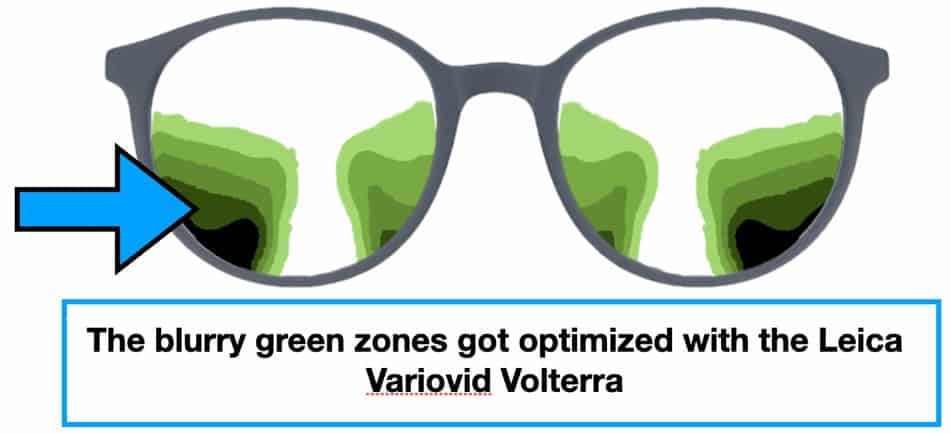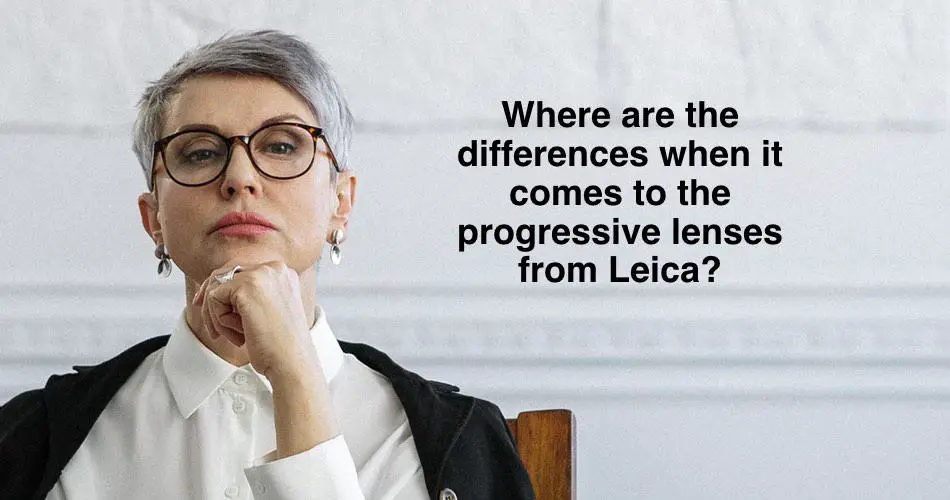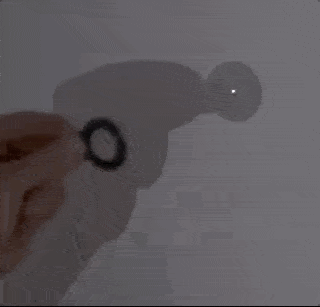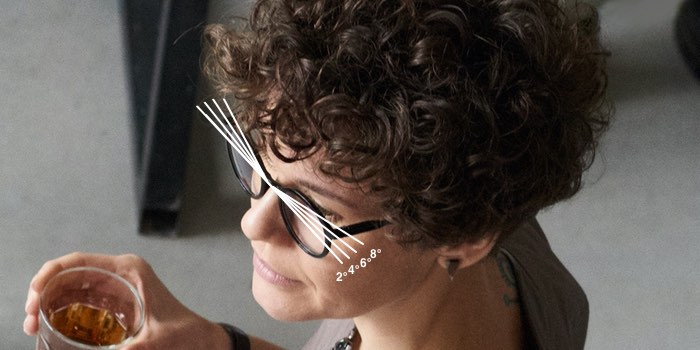After reading this article you will know the differences in progressive lenses from Leica. This includes the features of the lenses to provide you a great visual experience the cost and what our experience with them is.
When we talk about progressive lenses they can enhance your comfort and your clear field of view with certain changes in the parameters. This means the more data about the lenses is calculated in the better your experience with the lenses gets. Let us have a look at those features in the table below.
Leica Progressive Lenses Line Up Explained
| VARIOVID® VOLTERRA | VARIOVID® PLATINE | VARIOVID® GOLD | VARIOVID® SILVER | |
| Reading distance during refraction | ✅ | ✅ | ✅ | |
| Different Designs | very soft | very soft | very soft | A bit harder |
| Pantoscopic tilt | ✅ | ✅ | ✅ | |
| Vertex distance | ✅ | ✅ | ✅ | |
| Wrap Angle | ✅ | ✅ | ||
| Customized Position of reading zones | ✅ | ✅ | ✅ | |
| Prism Optimization | ✅ | ✅ |
The Variovid Volterra
The Variovid Volterra is a fairly new lens on the market with fairly great performance. If you are intrestd in a review of this progressive lens here you can find it.
The Variovid Volterra has a standardized version and a fully customized version which takes into account how the lenses sit in front of your eye. The fully customized version has the ending Continuum.
Generally speaking, I am a big fan of fully customized progressive lens designs. Because even smaller differences in the fit like how much the lens is tilted in front of you can make or break your experience.

This way visual comfort can be enhanced. In terms of the fitting options the lenses can be fit perfectly to your needs. No matter how you position your arms while reading or how the frame sits the Volterra Continuum can be optimized of your liking.
The Volterra line is built on a new set of calculations which should reduce blurriness in the periphery and smooth out the transition from the clear field of view to the blurry parts in the periphery in the lower half of the lenses.
Depending on what you do in your daily routines and your prescription you can get the Variovid Volterra in a shorter, medium sized or longer version. The longer the progressive lens design the smoother the transition from distance vision to full reading support will be.
This progressive lens design absolutely keeps up with other high end lenses. At first it took a while for me to get used to it but after a while I really started to like them. This sometimes happens when you wear a new lens design for the first time.
The Variovid Platine
The Variovid Platine is the precursor of the Volterra series and in this case in is fully customizable. This means the lens surface is optimized depending on how the glasses sit in your face for best visual comfort and the widest field of view.

As you can see in the table above the Variovid Platine shares a lot of features with the Volterra series. A very soft design and practical every optimization. The only thing missing that brings a difference is the new calculation that should lead to a reduction in blur in the periphery.
In my humble opinion your experience will be close and although the the Volterra is a great lens it is not a revolution. It will be more like a slight improvement over thePlatine series.
Variovid Gold
The Variovid Gold series is quality wise a lens placed right in the middle. Depending on how wrapped the frame sits in your face in which the lenses are fitted. This could lead to bigger blurry fields and less clear view. The reason is if the lens is somehow tilted and this information is not being used for the calculations you will end up with a prescription that is not ideal.
Look at the short clip below. Here you can see a lens that is tilted and look at what happens to the light beam. When you see a focal point the lens sits ideally but as soon as the tilt starts to influence the light beam the prescription changes and the focal point vanishes.

This however can be compensated and the Gold series can do this but only when it is tilted up and down. Not when it comes to the wrap angle.

When I say it can not be optimized for that angle an average value is assumed in which the lens sits in. If the lens sits in this angle by chance you already have the optimal fit. If it deviates from this angle some people notice a decrease in the field of view they could use.
Variovid Silver
The Silver line from Leica is a lens which is for customers who still want the great technology from the coatings but are more price sensitive. This means this progressive lens can not be customized to your frame whatsoever. Every lens parameter is averaged out.
Does this means you will definetly have less clear field of view with those lenses compared to the ones you already read about? No. The reason is if your Pupillary distance by chance is the standard of 32mm on both sides you and the frame you choose sits in pretty much every angle the lens was designed to fit you might end up with a very good visual experience.
However, in most cases, you will feel or see a difference between customizable progressive lenses and standard progressive lenses like the Variovid Silver as presented here in this study from Johanne Forkel and the team from Optom Vision.
What Is the Cost of Progressive Lenses From Leica?
Here in this table, you can see the prices from where prices start with the progressive lenses from Leica. I listed the prices for the base material CR 39 which is not thinner in combination with the Aquadura Vision anti-reflective coating. With this anti-reflective, a hardening and anti-static coating is included. The price is listed includes one lens.
| Progressive Lenses | Price starts at: |
| VARIOVID® VOLTERRA | 616€ |
| VARIOVID® PLATINE | 566€ |
| VARIOVID® GOLD | 496€ |
| VARIOVID® SILVER | 406€ |
My Experience with Leica Progressive Lenses
One thing was clear pretty fast to me with these lenses. The anti-reflective coating is one of the best I have ever seen. Even compared to other premium brands. The best coating options from Leica are called Aquadrua Vision and Aquadura Vision Pro.

One Pro version is achromatic which means the very minimal glare on the lens surface is not colored in any way. It just shines very minimal but white. I have no color fringes with this coating as I had with other brands and during the day and night I had basically no reflections on the lens surface. Just outstanding performance.
And I always compare the different lenses in the same frame model. Just to make sure they fit the same.
The Aquadura Vision without the pro in the ending has a slight blue glare on the lens surface and is also really good. But the pro version is my personal favorite. I wrote more about my wearing experience in this blog post here. It is about the Variovid Volterra
Are Leica Progressive Lenses actually Good?
Leica delivers great progressive lenses. We tested them and they are head to head with the other well-known companies that produce high-end progressive lenses.
As you probably read above I am really thrilled about the coatings. In regards to the coating, Leica is ahead of its competition here. When it comes to hard facts like comparing the clear field of view with other high-end brands Leica delivers the same performance as other well-known brands.
I hope you found the information you wanted in this article. If not submit your question via email.
I wish you a great day.
